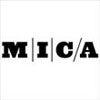
| Ranking | School | % |
|---|---|---|
| 1 | Yale University | Top 1% |
| 2 | Rhode Island School of Design | Top 1% |
| 3 | Maryland Institute College of Art | Top 2% |
| 4 | Pratt Institute | Top 2% |
| 5 | The New School's Parsons School of Design | Top 3% |
| 6 | Carnegie Mellon University | Top 3% |
| 7 | School of Visual Arts | Top 4% |
| 8 | Massachusetts College of Art and Design | Top 4% |
| 9 | Virginia Commonwealth University | Top 5% |
| 10 | Cooper Union | Top 5% |
Our 2018 list of the Top 10 Graphic Design School Programs on the East Coast. For an explanation of our ranking criteria, click here.

Founded in 1701, Yale University is home to more than 12,450 students enrolled in dozens of programs in the areas of art, architecture, divinity, drama, forestry and environmental studies, law, management, music, public health, and more. The school, which houses more than 145 departments and schools, is home to one of the most prestigious fine arts schools in the U.S. Established in 1869, the Yale School Art was the nation’s first art school connected with an institution of higher learning.
With an enrollment of more than 100 students, the Yale School of Art offers MFA degrees in Graphic Design, Painting and Printmaking, Photography, and Sculpture. An interdisciplinary Film & Video program is also available.
Graphic Design MFA (YGDMFA) is a competitive program that accepts just 10 students each year and up to seven students into the preliminary-year program. Per the School, MFA applicants are expected to have “substantial and distinguished experience in visual studies and related professional experience.” Students can expect support for their graphic design collections in several ways including, “studio work led by faculty meeting weekly, small five- or six-person thesis groups meeting biweekly and individual sessions with writing and editing tutors.”
Lectures, presentations, and workshops are also part of the program as well as access to “extraordinary” resources including Yale University courses, conferences, films, lectures, museums, and the “extensive” research and rare book collections of Sterling and Beinecke libraries. The Yale Graphic Design MFA takes two years to complete, full-time.

Founded in 1877, Rhode Island School of Design (RISD) is a private art and design school that serves approximately 2,480 students from across the U.S. and 57 other countries. The school offers 32 graduate and undergraduate art and design programs leading to a BFA, MFA, five-year Professional Baccalaureate, or a Bachelor of Architecture. Aspiring graphic designers have two options—a BFA or MFA.
One of the largest departments at RISD, Graphic Design offers “countless opportunities to collaborate within and beyond the discipline,” thanks to access to approximately 165 undergraduate majors. The MFA program offers the same opportunity, as well as two tracks: a two-year option designed for students entering with undergraduate degrees in graphic design or other visual communication, and a three-year option designed for students with degrees in liberal arts, the sciences or fine arts.
An impressive 96 percent of all RISD graphic design graduates are employed one year after graduation. Seventy percent are employed in positions directly related to their major.

Founded in 1826, Maryland Institute College of Art (MICA) is the oldest degree-granting college of art in the nation. The school serves nearly 3,500 undergraduate, graduate, and continuing studies students from 49 states and 65 countries in fine arts, design, electronic media, art education, liberal arts, and professional studies degree and non-credit programs. MICA’s more than 80 art and design programs lead to either a BFA, MA, MFA, MPS or Certificate.
Programs for aspiring graphic designers include a BFA in Graphic Design with three Concentrations including Graphic Design Studio, Book Arts Studio, and Graphic Design + Humanistic Studies. An MFA in Graphic Design (GD MFA) is also available.
The undergraduate graphic design curriculum at MICA features a three-year sequence of core design courses, while the 60-credit MFA program features two years of full-time study that combines “critical seminars, guided studio courses, and independent work.” Per the school, students in the MFA program may choose a concentration in Critical Studies or Curatorial Practices or “take advantage of electives in many MICA departments, including video, printmaking, and digital media.”

Founded in 1887, Pratt institute is home to more than 4,600 students enrolled in 22 undergraduate degree programs, 26 graduate degree programs, and a variety of Certificate and Minor programs across five schools and The Center for Continuing and Professional Studies. Founded in 2014, The School of Design offers “up to four of Pratt’s oldest and most esteemed disciplines,” including Communications Design (ComD), Fashion Design, Industrial Design, and Interior Design.
Per the School of Design, the ComD program is the “the only program in the country that recognizes and embodies the convergence and integration of Illustration, Advertising, and Graphic Design as the primary forces for the visual expression of ideas.” Students may Concentrate in any of the three areas. The School of Design also houses the Graduate Communications Design Department, which also offers MFA and MS degrees in Communications Design and an MS in Package Design.
For students that are not ready to commit to a degree program, the School of Continuing and Professional Studies (SCPS) offers Certificate Programs in Digital Design including Graphic Design, Computer Graphics, Motion Graphics and others. These programs may be taken individually or “stacked,” producing an “accelerated path to completion.” Like the undergraduate and graduate ComD programs, Certificate programs offer the opportunity to complete an internship.
Students in all programs will have the opportunity to enroll on one of more than Pratt offers more than 20 study abroad programs and international exchange programs in more than a dozen locations including Florence, Milan, Copenhagen, London, and Tokyo.

Founded in 1896, The New School's Parsons School of Design is home to more than 5,000 students enrolled in 27 undergraduate, graduate, and associate degree programs. Parsons houses five schools, including the School of Art and Design History and Theory, the School of Art, Media, and Technology (AMT), the School of Constructed Environments, the School of Design Strategies, and the School of Fashion. The School of Art, Media, and Technology, offers several degree programs for aspiring graphic designers. Offerings include an AAS in Graphic Design and a BFA in Communication Design.
The AAS program provides a “solid foundation in the traditional practices and concepts of graphic design,” while the BFA covers typography and interaction. Sponsored projects are in the areas of publication, interaction design, branding, advertising, type design, information design, motion graphics, and environmental design.
Note that Parsons also offers a Graphic and Digital Design Certificate through its continuing education department. The program, which consists of six courses, can be completed online or through a combination of online and on-campus courses.

Founded in 1900, Carnegie Mellon University (CMU) is a global research university that serves nearly 14,000 students from 109 countries. The school offers more than 100 programs across seven colleges and schools. The College of Fine Art, School of Design, offers a Bachelor of Design (BDes), formerly BFA, with three tracks: Products, Communication and Environments. Students may focus in one or all three areas, or pursue a more interdisciplinary focus that combines two of the three.
Other undergraduate options include the Minor in Design Application and the Undergraduate Interdisciplinary Degree known as “BXA,” which provides students with the ability to evenly balance their study of humanities or sciences with design. While BXA majors may take 26 design courses and 15 outside courses, most BXA students take 12 design courses, with the balance of their courses taken outside of the School of Design.
The Minor is for students admitted to other programs on campus who are interested in gaining “fundamental design skills and/or exposure to design.” Graduate options include a one-year Master of Arts (MA) in Design program, a one-year Master of Professional Studies (MPS) in Design for Interactions, a two-year Master of Design (MDes) in Design for Interactions program, and a PhD in Design Studies.

Founded in 1947 as “Cartoonists and Illustrators School,” School of Visual Arts (SVA) serves nearly 4,300 students from across the U.S. and abroad. The school offers 11 undergraduate and 21 graduate degree programs in areas ranging from fine arts and graphic design to filmmaking and photography. The programs at SVA lead to a BFA, MFA, MA, MAT or MPS degree.
Offerings for aspiring graphic designers include a BFA in Graphic Design that consists of 72 credits of studio art courses, 30 credits in humanities & sciences, 12 in art history, and six elective credits. An internship is part of the program, as well as the opportunity to focus in Package Design, Editorial Design, Information Graphics, Corporate Identity, Publication Design, CD Packaging, Book Jacket Design, Environmental Design, or Website Design.
Students who would like to earn an advanced degree have several options including an MFA in Design and a MFA Design / Designer as Author + Entrepreneur. Per the school, the MFA in Design “emphasizes entrepreneurship as an alternative to conventional practice, and as a means to raise the level of design expertise and achievement. It teaches “a broad set of visual, verbal and textual approaches as foundation for design, and focuses on “creation to optimize the designer’s abilities to rise to the next professional level.”
The MFA Design/Designer as Author + Entrepreneur is “suited for students and professionals with backgrounds in graphic design.” The school also encourages “those with environmental, product, Web, interaction design, film and photography backgrounds who are interested in further developing their ability to create content of value.”
All graduate students have access to SVA MFA studios, which are open hours a day and “designed to simulate an operational design/media firm with spacious work-stations that allow for individual and collaborative work.”

Massachusetts College of Art and Design (MassArt) was founded in 1873 as a training institution for aspiring architects, artists, drawing teachers, and designers. The school offers than 20 undergraduate art programs, nearly a dozen graduate programs, and seven Certificate programs to 1,985 students.
The Graphic Design Department offers BFA in Graphic Design that focuses on “learning by doing” in studio classes. Per the school, students in the program are exposed to intensive critique as well as discussions and lectures “through a sequenced combination of required courses in the major, studio electives, technical workshops and computer lab-based courses.”
Also available is a 38 credit hour Graphic Design Certificate Program (GDC) designed for working adults who are interested in advancing into a career in graphic design. Thanks to an excellent reputation in the design community, graduates of the Certificate program obtain jobs in all areas of the industry.

Virginia Commonwealth University (VCU) was established in 1838. It is home to 31,231 students enrolled in around 226 degree and certificate programs across 15 colleges and schools. The School of the Arts, which serves more than 3,000 students, offers 25 degree programs. An additional four programs are offered at VCU’s Qatar campus. The School of the Arts, Department of Graphic Design, has several programs for aspiring graphic designers. Options include BFA degrees in Graphic Design and Communication Arts, and an MFA with a Concentration in Design/Visual Communications.
Per the Department, students in the MFA program “concentrate on the philosophical, communicative, and aesthetic relationships of visual problem solving and the interacting skills leading to the effective articulation of concepts.” BFA students will take courses in the areas of Publication and Print Design, Sequential and Motion Design, and Interaction Design, “along with a series of related Studio and Seminar courses.” Both BFA options prepare students to create effective visual communications.

The Cooper Union for the Advancement of Science and Art (CU) was founded in 1859 by inventor, industrialist and philanthropist Peter Cooper. The school offers programs in the areas of Art, Architecture and Engineering, and courses in the Humanities and Social Sciences. With nearly 1,000 students enrolled (2016-2017), CU’s art students account for 32 percent of the student body.
The School of Art at Cooper Union offers a flexible BFA in Art with a Focus Graphic Design. Students in the program may take elective studio classes and seminars, offered on a rotating basis, they may choose to focus their work in one or more areas of specialization, and they may enroll in advanced studio classes with the same course number multiple times. Students are also “encouraged to follow an integrated approach by selecting from various areas while observing a prerequisite system designed to allow in-depth study in specific disciplines.” Other program highlights include Internship and study abroad opportunities.

